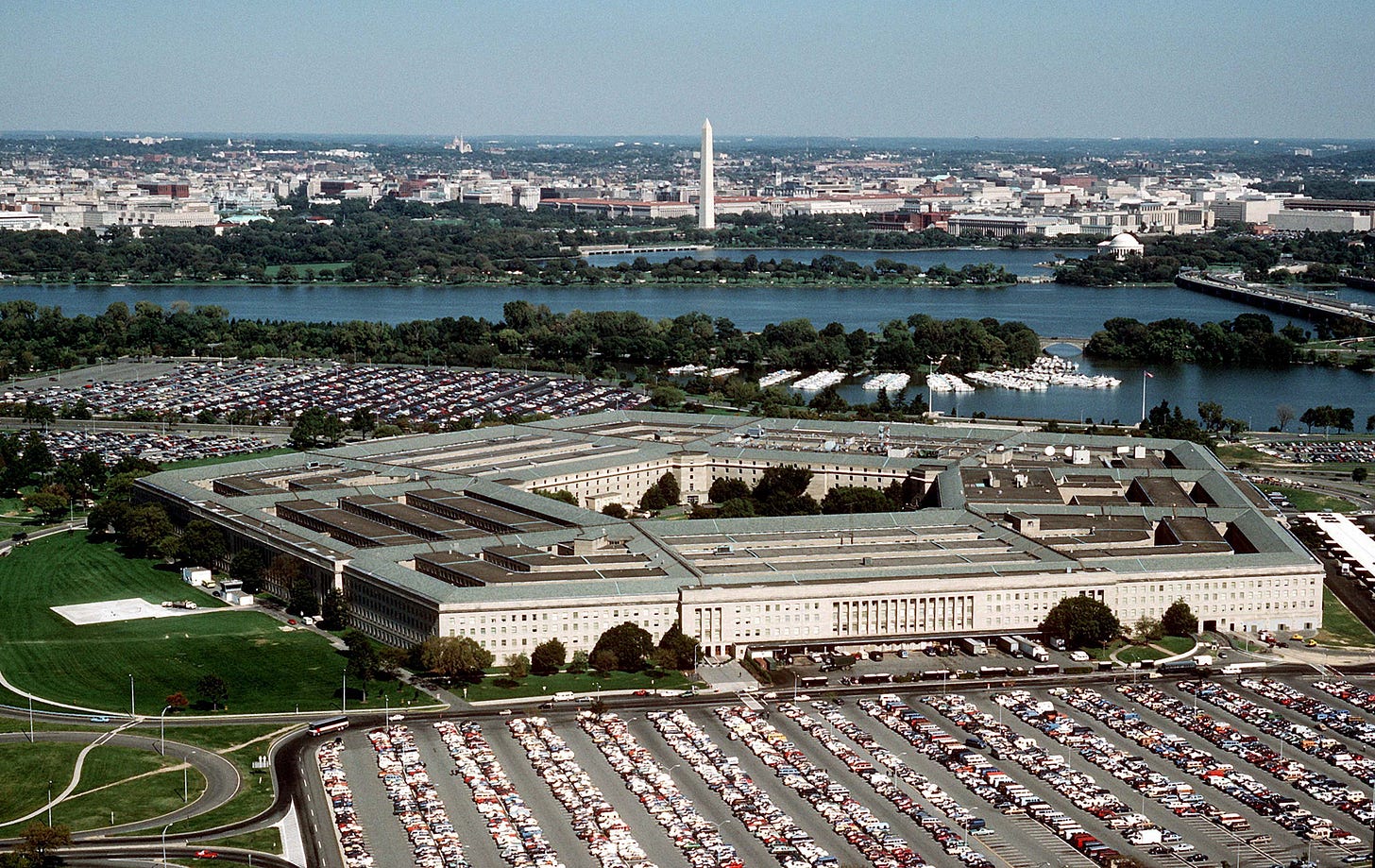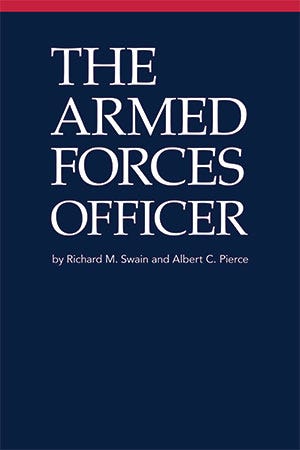Note: I typically write about topics focused on the intersection of social science and faith as they pertain to how we humans navigate the hardship and uncertainty of life. That will continue (for example, click here to read my last post, “Thy Blind Instrument”).
Yet another important part of how we navigate a certain segment of life’s crucibles involves how we conceptualize, operate, and interact with the military. Why? Click here for an explanation. So, I’m exploring that once in a while via a ten-part series unpacking ideas from the book The Armed Forces Officer.
Below is part 7 of 10 (click here for all posts on this topic). As always, these are my views, and they do not necessarily represent the views of the U.S. Department of Defense or its components.
A Continuously Negotiated Relationship
The military—the profession of arms, as we can rightly call it—exists within a broader society and as part of a larger governmental system. Because professional militaries have a unique role and set of tasks involving the lawful management of violence, there’s a continuously negotiated relationship between the military as an organization and its civilian counterparts.
Big parts of that relationship are codified in law, but others are more subtle and ongoing. Regardless, all parts of the relationship must be maintained as people and situations continually change.
As Richard Swain and Albert Pierce in The Armed Forces Officer describe, this relationship exists in two dimensions.
The first dimension, which they call the “vertical” dimension, involves the dynamic that exists in the United States (and a number of other countries) in which civilian leaders ultimately control the military. The second dimension, which Swain and Pierce call the “horizontal” dimension, involves the relationship between the military and broader society. These dimensions are the topics of the seventh and eighth chapters of The Armed Forces Officer, respectively.
Why does any of this matter? Because it’s fundamental to the entire idea of a professional military! Without civilian control of the military, it’s easy to see how a country can slip into a military dictatorship—a system in which lethal power becomes the vehicle for rule over a nation’s people. Civilian control of the military in a democratic republic like the United States, furthermore, ensures that the people themselves are ultimately able to choose the civilians who run the whole show including the military.
A related perspective is that it’s all about trust. Placing civilians in control of budgets, high-level personnel decisions, and the execution of national power through military force ensures that the military remains a viable tool for civilian decision-makers and not an independent organization that could ostensibly do whatever its military leaders want with no accountability.
Trust matters too for the “horizontal” dimension of civil-military relations, but I’ll touch upon that in a future piece.
So who are the civilians that run the U.S. military?
I’m not going to list them all here, but the big civilian roles in charge of operational matters are the President (as the military’s Commander in Chief) and the Secretary of Defense. The civilians who serve as service secretaries (e.g., the Secretary of the Navy, the Secretary of the Army, and others) also play a huge role in running each of their services in terms of matters involving organization, personnel, training, equipping, and other related items. And all of these secretaries have numerous subordinate civilians who assist them.

Unequal Authority and Asymmetric Knowledge
The relationship between civilian leaders of the military and the services’ own uniformed leaders is by its very nature a bit tricky. As Swain and Pierce point out, this is because it’s a relationship fundamentally characterized by “unequal authority and asymmetric knowledge.”
In terms of authority, the civilians in charge have ultimate control (to the extent that what they order the military to do is within both legal and moral bounds). Yet the exercise of that control is one that must take into account the different types of knowledge possessed by civilian and military leaders.
As Swain and Pierce note:
… the authority of the military professional rests upon the claim of extraordinary expertise in the application and management of large-scale deadly force … At the same time, senior civilian leaders posses their own special knowledge and skills upon which the soldier depends for ultimate success. Generally speaking, senior civilian officials are likely to know more than senior military officers about such matters as the possibilities residing in international relations; economic-political connections; diplomatic arrangements and initiatives; U.S. and foreign domestic political considerations; and the array and manipulation of the capabilities of the various departments of the national government. These skills are critical to the development and execution of policy and strategy at the highest level … They give substance to the notion that armed forces don’t make war, nations do. (p. 102)
Alluded to yet not mentioned explicitly in Swain and Pierce’s exploration of this dynamic is the notion that the military is only one of the instruments of national power that civilian governments may use to carry out their strategic objectives. Other commonly cited instruments of national power include diplomacy, information, various economic and financial levers, intelligence, and law enforcement.
Keys to Success in the Vertical Dimension
Managing this awkward dynamic of unequal authority and asymmetric knowledge is the topic of numerous studies and opinion pieces. But here are a few keys to success that Swain and Pierce outline:
Viewing the dynamic between military and civilian leaders as a partnership, one that requires ongoing effort.
Developing and maintaining mutual understanding with humility and trust.
Education for all involved regarding the differences between civilian leadership and military organizations in terms of both cultural norms and different types of expertise.
Maintaining a functional Joint Chiefs of Staff, through which the Chairman is the top military adviser to the President and other key civilian leaders.
Managing conflict and disagreements carefully.
More on that last point: Senior military leaders have disagreed with their civilian leaders at many points in the history of the United States. One philosophy in addressing these situations is that senior military leaders should register their disagreement forcefully with the proper authorities yet that’s where it should end—without a public “airing of dirty laundry,” so to speak.
Others have done so in a more public matter. I’m not going to delve into the details on these dynamics and options; suffice it to say that all involved should exercise great prudence in what they do and how they do it.
Regarding a military officer’s approach toward matters of disagreement with civilian authorities, Swain and Pierce summarize it this way: “In the end, the officer who cannot support the President’s or Secretary of Defense’s decisions in good conscience, or finds he or she has lost the ability to perform the advisory function of the office, must offer to resign, or … to retire” (p. 110).
Summary
In the United States, elected civilian leaders—or civilians appointed by those elected civilian leaders—control the military. This represents what we can think of as the “vertical” dimension of civil-military relations.
Because that relationship is one in which the civilians have the ultimate authority yet the types of expertise differ greatly between those civilians and their military counterparts, it takes continual work to ensure the relationship functions well.
Military officers are bound by their oaths to support and defend the Constitution of the United States, and the nature of their commissions dictates an obligation to follow the orders of civilian leaders.
Matters of disagreement between civilian leaders and military officers must be handled with care, with resignation or retirement being in most cases the best path forward if an officer cannot reconcile him or herself with the legal or moral nature of the situation.
This dimension of civil-military relations is a critical feature of the United States government, one that leaders must manage carefully to ensure its health and effective functioning. It matters for civilian government leaders as they balance priorities and instruments of national power. It matters for military officers as they consider the best ways to carry out their duty to support and defend the Constitution.
It also matters for every eligible voter in the United States because it is they who ultimately decide who is in charge.
Please note: The opinions and views expressed here belong solely to the author and do not necessarily reflect those of the Department of Defense (DoD) or its components. Any mention of commercial products or services does not imply DoD endorsement. Additionally, the presence of external hyperlinks does not signify DoD approval of the linked websites or their content, products, or services.
References and for further reading
All of my current posts about The Armed Forces Officer
The Armed Forces Officer by Richard M. Swain and Albert C. Pierce. Click here to download the book for free from National Defense University Press.
The Declaration of Independence
The Constitution of the United States
Code of Conduct for Members of the United States Armed Forces
Join the Navy! Click here for information




